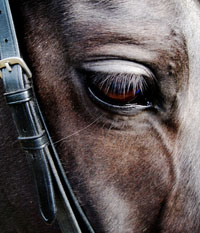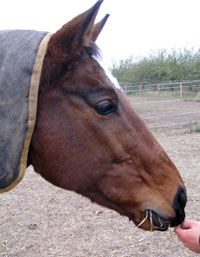Here are a few suggestions for fire prevention and emergency management:
The NO SMOKING rule around stables should be strictly adhered to by everyone, no exceptions. Post NO SMOKING signs where they are easily visible and make sure everyone complies.
FIRE EXTINGUISHERS should be checked annually and recharged by a professional, everyone should be trained on how to use a fire extinguisher. It’s recommended that fire extinguishers should be placed by the electrical box and at 30 / 40 foot intervals around the yard / barn. Fire extinguishers should be next to each barn exit.
WATER in the event of a fire an external water supply is essential for fire fighters make sure you have one.
ELECTRICS – all electrics, wiring, lighting etc should be installed and checked by a professional electrician. Any electrical equipment eg. Clippers etc should be unplugged after use and stored safely.
HAY & STRAW – should be stored away from the stables / barn. Particular attention is required for the storage of newly cut hay which can reach temperatures of 150 degrees or higher.
TIDYNESS – Regular cleaning will prevent a build up of combustibles such as hay, cobwebs etc thus helping to prevent the spread of fire. Baling twine should be removed from the vicinity of stables / barns and stored elsewhere or safely disposed of.
DOORS – should always be accessible and kept unblocked even those that are not in use, check that they open freely and easily.
TRACTORS – tractors, machinery, fuel etc should be stored well away from the stable / barn area.
FIRE DRILL – have a plan and make sure that everyone on the yard knows what to do in the event of fire.
EMERGENCY TELEPHONE NUMBERS – should be attached to the wall by the stable telephone.
ADDRESS – Along with emergency telephone numbers make sure that the stables / barns full physical address is kept by the telephone along with any special directions for drivers if applicable.
HEAD COLLARS – Every horse should have a head collar and lead rope hanging on the stable door so they can be led to safety if the stables / barn need to be evacuated.
EVACUATION – Designate a securely fenced paddock away from the stables / barn where the horses can be safely kept in the event of fire.
Remove horses closest to the exits first.
Lead one horse at a time.
Lead horses to the “safe area” making sure they are safely secured before releasing.
Maintain human safety at all times.
The above are just a few suggestions that will help to make your stable yard / barn a safer place but they are not fully comprehensive and professional advice from a fire safety expert is highly recommended in planning your fire safety plan.



